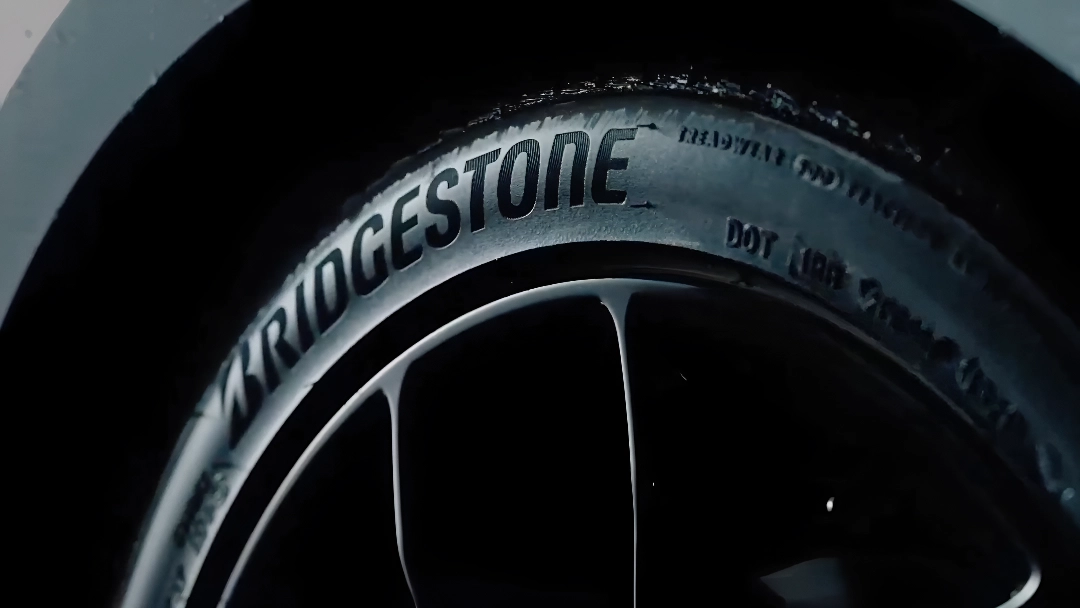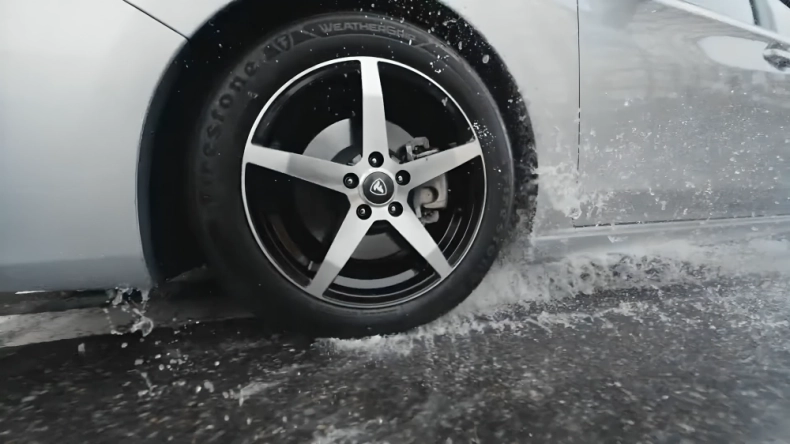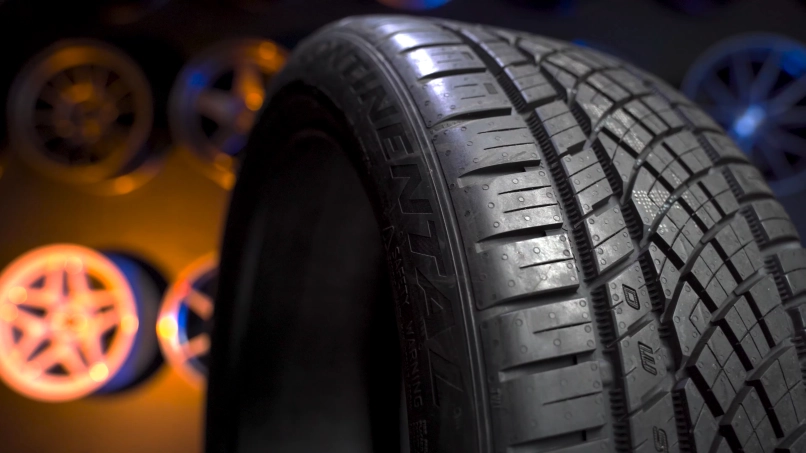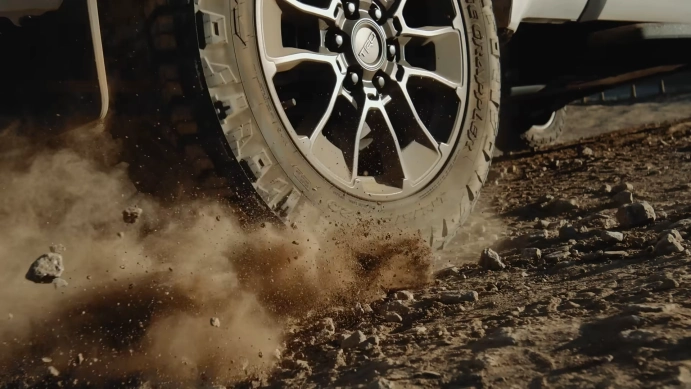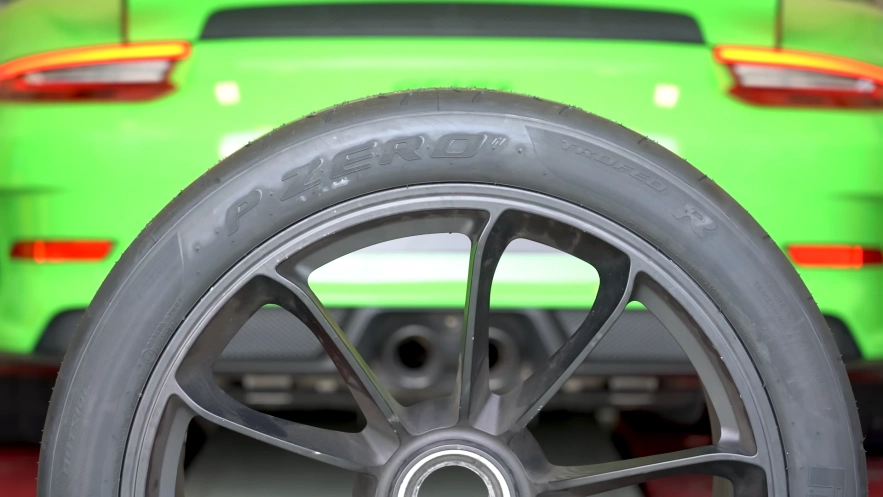Inner tire wear is the most common issue for car owners. Having to deal with unevenly worn tires on the road is the worst experience ever. Sometimes, inner tire wear badly affects the steering or braking systems. Therefore, early fixing of inner tire wear issues ensures the ride’s safety and the tread’s durability. So, how do you fix inner tire wear?
You can easily fix inner tire wear by following these steps:
- Inspect the root cause
- Examine suspension components
- Get your wheels aligned
- Properly inflate your vehicle’s tires
As a beginner, you can only properly understand the step with proper instructions. Therefore, I’ve listed each root cause with several sections and step-by-step instructions to give a clear guideline. Ready to get the easy solution with this entire article?
What causes the inside tire to wear?
Once you’ve diagnosed the root cause of inner tire wear, you can easily fix the issue. There are several reasons why your inner tires wear.
To check what the exact cause is, read the causes as well as the “how to inspect” section listed below-
Cause 1: Misalignment of wheels
Wheels are connected to the car with a suspension system. Here, the automobile wheel needs to be adjusted and aligned in accordance with the manufacturer’s instructions.
Therefore, adjusting the tire’s angle makes sure that they make contact with the road for a comfortable ride.
Bridgestone, the best tire manufacturer, claims that improper wheel alignment increases the risk of internal tire wear.
How to inspect:
Steering the wheel to go straight forward. If the wheel is unable to go straight and moves in a different direction, then your wheels need proper alignment.
Cause 2: Camber misalignment
The wheels can be viewed from three different angles: camber, caster, and toe. Another one that may contribute to inside tire wear is the camber angle.
A camber angle can be seen from the front of the car. It can be positive or negative.
Usually, negative camber improves the cornering of the car by tilting the outer wheels inward. Here, strong negative camber can cause excess stress on half of the inside tire, resulting in uneven wear.
How to check:
Park the vehicle at ground level. Then, place a straight edge across the wheel. Now, use an angle finder to get the camber angle of your wheel.
The one-sided shoulder tire wear also indicates that it is at the wrong camber angle. When the inside or outside shoulder rib is much more worn than other ribs, it is one-sided shoulder tire wear.
Cause 3: Incorrect toe angle
An incorrect toe angle can cause rapid tire wear on both sides of the tire. The toe measurement is the difference in distance between the front and back of the tires.
There are three different toe angles to identify the tire direction while driving. These are-
- Zero toe angle: When a toe angle is zero, the front and back tires are generally parallel to each other.
- Toe-in: Toe-in refers to front tires pointing towards each other as compared to the rear tires which are pointing straight ahead.
- Toe out: Toe out occurs when the front of the tires is pointed outwards away from the center.
There is minimal inside tire wear when a vehicle’s wheels have a zero toe angle. When the wheels are at a toe-out angle, you should worry about inside tire wear because the outward angle forces the tire to absorb more load by increasing friction with the road. Thus, more wear occurs at the toe-out angle.
How to check:
- You can measure with toe geometry.
- Some troubleshooting issues can tell you that your wheel has the wrong toe angle. Such as:
- Troubling with steering.
- Problems with straight-line stability.
- Difficulty turning or cornering vehicles.
- Types of wear are another option to inspect incorrect toe settings:
-
- Heel/toe wear: This wear can seem like saw teeth. Excessive positive or negative toes cause this wear on the shoulder ribs.
- Feather edge tire wear: The term “feather edge wear” describes rib wear that is more noticeable on one side than the other. It makes one side harder or sharper than the other side. Excessive toe angle is the reason for feather edge tire wear.
Cause 4: Improper inflation pressure
Another factor contributing to inside tire wear is variations in inflation pressure. Underinflated tires frequently result in greater inside tire wear than outside tire wear. Overinflated tires may also be the reason for uneven tread wear.
There’s a direct relationship between the temperature and pressure of a tire. When the temperature is higher, the pressure also increases.
According to the Tire pressure monitoring system: “A tire inflated to 100 psi, can undergo 68 degrees Fahrenheit. It will increase 10-15 PSI to give enough heat until it reaches thermal equilibrium.”
A tire with a pressure of 6 psi is considered underinflated. In this case, it can increase friction and heat buildup, resulting in prematurely uneven tire wear.
The recommended high pressure is 30-35 psi. When the psi is too high, it distorts the shape of the tire and flexes the inner sidewall excessively when in contact with the road. Hence, it reduces traction and accelerates tire wear.
How to inspect:
There are two types of wear that you can check to see whether your tire is overinflated or underinflated.
Center wear: When the tire is notably more worn along its centerline than along the edges, it is overinflated.
Edge wear: Having more wear on the inner and outer edges of the tire than the center will indicate that your tire is underinflated.
Cause 5: Worn ball joints
Ball joints are important parts that connect wheel hubs to the control arm. If the ball joints are worn, they lose ball tension or clamping force.
Additionally, it throws the alignment of the front wheels off. As a result, tire wear occurs more quickly than on the opposite side.
Once more, the steering and suspension systems are also affected by the worn ball joint.
How to inspect:
To check whether the ball joints are worn or not, you need to drive a car over a bump, dip, or around a corner. The worn ball joints make intermittent clunking noises from the corner of the vehicle. Increasing tire wear can make this clunky noise more louder and frequent.
Cause 6: Worn tie rods
Worn tie rods can be the culprit behind inside tire wear. Tie rods connect the steering wheel to the vehicle’s wheels.
The inside tire suffers more wear when the tie rods are worn out because they let the tire toe out farther than usual.
How to check:
You may experience the vibration or shaking sensation of the steering wheel while tie rods are worn. There’s also a rattling and clunking noise that can be heard while the tie rods are worn.
Cause 7: Faulty Shocks and struts
Shocks and struts provide better traction to help maintain consistent handling and braking. It also resists unwanted wear on tires to ensure a safer driving experience.
When shocks and struts become worn, tires can’t have a good grip on the road. Thus, it causes excessive bouncing. As a result, it reduces the road holding force, resulting in “cupping” tire wear.
How to inspect:
These are several points that can give you confirmation that tires have bad shocks and struts.
- You can hear pounding or knocking sounds.
- Bouncy ride
- Vibration in a steering wheel.
- Leaking fluids from the exterior of shocks or struts.
How Do You Repair the Wear on the Inside of Your Tires?
You can’t fully repair the inside tire wear. But, you can reduce the possibility of damaging your tires in the future. Try this step-by-step guide which is listed below-
Step 1: Inspect the root cause
The first and most important step is to find out the root cause of the inside tire wear. After you acknowledge the cause, you can start to better the situation!
Next, follow the next steps according to the root cause of your tire wear!
Step 2: Examine suspension components
As we know, the most common cause is the misalignment of wheels. Before adjusting the wheel alignment, you need to examine the suspension components.
Proper alignment of the wheel is not only to check camber, caster, or toe angle. Also, it involves inspecting links and connectors that allow the desired movement of the wheel. Otherwise, all attempts will go in vain with faulty suspension components.
Here, you need to examine each suspension component that is linked to the wheel, such as shocks and struts, ball joints, arms, bars, tie rods, and bushings.
Ensure the components are not damaged or worn out; if they are, replace or repair them as soon as you can.
Step 3: Get your wheels aligned
If you have yet to pay any attention to your wheel alignment for a while, then inside tire wear is obvious to observe.
After perfecting the suspension component, you should measure the toe angle, caster, and camber at this stage. Then, adjust these parameters according to the manufacturer’s specifications for your vehicle.
Step 4: Properly inflate your vehicle tires (if necessary)
Overinflated or underinflated tiers can also indicate inner tire wear, so you must check the inflation pressure of your tires regularly.
Read the manufacturer’s guidelines and adjust the tire pressure to its advised specifications to ensure safety.
Is It Safe To Drive On Unevenly Worn Tires?
No, it is not totally safe to drive with unevenly worn tires. Although you can continue driving on them, it’s a warning sign and you must not neglect it, as it can cause serious accidents!
A new tire typically has a standard tread depth to provide better traction and stability on the road’s contact surface.
Conversely, tires that are unevenly worn have less tread depth, which prevents the tire from gaining more traction. As a result, tires can’t handle tough terrain as well as before! The inability of tires to handle additional load and stress results in an uncomfortable ride.
Besides, worn tires have less traction, which can result in hydroplaning. Good tires are faster at removing water from the area beneath their contact patch than worn tires. As a result, steering, braking, and power control are lost.
Unevenly worn tires also negatively affect the brake and suspension systems. Badly worn tires reduce steering control, which is why accidents can happen at any time.
Therefore, repairing or replacing awfully worn tires is the safest way! After noticing all the indications that point out to it, you shouldn’t just let it go! Make sure your tires are safe to drive on.
How Does Inner Tire Wear Affect Your Vehicle’s Performance?
Inner tire wear negatively affects a vehicle’s performance. Such as-
1. Reduce traction
Once your tire gets worn out, its tread depth only offers a little grip on the road. It’s difficult to drive on a wet, rocky surface as well as in snow.
Due to hydroplaning, riding on wet roads is much more difficult with inner tire wear. You find it more difficult to handle and steer the car in such conditions.
2. Bouncy ride
The capacity of the inner tire to absorb load decreases with wear. As a result, you must need help handling cars on rough terrain and uneven driveways. Inner tire wear causes a bouncy ride, which also turns into an uncomfortable ride.
3. Poor fuel efficiency
You’ll notice that worn tires consume more fuel than proper driving tires would. This is because as tire and road friction decreases, driving requires more fuel. As a result, you need to spend more money on fuel than before.
4. Create noise and vibration
Due to the inner tire wear, there’s a much louder sound when the vehicle turns a corner or bounces on a bumpy road. This can be irritating for the driver as well as for the passengers inside the vehicle.
5. Shorten the lifespan of a tire
Increasing inner tire wear not only affects road performance but also affects the tire’s durability. Day by day, reducing traction and stability on the road results in a tire loading more weight than it can handle. Hence, the tire gets damaged or bent over time, and there is also the possibility that it might blow out.
Preventing Inner Tire Wear: Common 5 Prevention Hacks
It would be wise to prevent the possibility of inside tire wear before it manifests itself. Let’s follow the tricks to prevent inner tire wear.
Prevention 1: Check tire pressure regularly
In most cases, improper tire pressure results in inner tire wear. Therefore, checking the pressure regularly can reduce the possibility of wear on the edges.
Experts recommend inspecting tire pressure once a month using the same tire gauge. Sometimes, you may rely on your eye’s assumption that the tires look good. However, it is important not to trust your eyes completely in this situation.
“Car Talk” recommends checking tire pressure even if the tires look fine.
Take a tire gauge to measure after a long trip. Or, whenever you drive a vehicle on tough terrain or bouncy roads, make sure the pressure is safe! And remember to take measures for cold tires!
Prevention 2: Examine suspension components regularly
Examine the suspension component quickly whenever you hear a noisy sound or have difficulty steering. If each component seems damaged, repair it early.
Otherwise, the inner tire wear will start to occur due to faulty suspension components. Also, the braking system will become faulty, which can cause serious accidents.
Prevention 3: Rotate the tires regularly
Rotation is very important to allow tire wear to be evenly distributed on the front and rear wheels. Besides, it also increases the traction on the road, allowing you to drive smoothly.
Rotating the tire from side to side is usually not effective. But the front-to-rear rotation pattern helps to improve even tread wear and maximize the lifespan of a tire.
Experts have differing views when it comes to how frequently a tire should be rotated.
“The Family Handyman” weighs in on this discussion! They said, “Tire rotation is done every 5000-8000 miles.” You can do this rotation when you get your vehicle’s oil changed. But, if your owner’s manual declares that your vehicle doesn’t need frequent oil changes, then try to carry out the tire rotation at least twice a year.
Prevention 4: Apply grease to tie rods
Many times, you need to pay attention to tie rods, which can also cause inner tire wear. It can easily be prevented by doing one thing.
Apply grease to the tie rods when the oil is changed on the tire. It’ll reduce the possibility of worn tie rods. And that turns into even more tire wear.
Prevention 5: Always have a wheel alignment
Minimizing inner tire wear is possible only with maximum wheel alignment. No matter how many things you’ve solved, you can only tackle the inner tire wear with wheel alignment.
Making a wheel alignment routine is the best solution. Getting your wheel alignment once a year will help you have a better tread life.
Conclusion
Don’t drive more aggressively. Plus, you need to avoid overloading the vehicle, which causes stress on the tires. These things should be observed and carefully attended to, to prevent uneven tire wear.
Have you got the right guidelines to fix inner tire wear? It’ll only take a few minutes to repair the issues! If you need more confidence, then take the vehicle to a repair shop. A professional mechanic will be the perfect choice to solve the issues.
Last tip: Remember to maintain the tires regularly. It’ll be a much cheaper option than repair or replacement.



